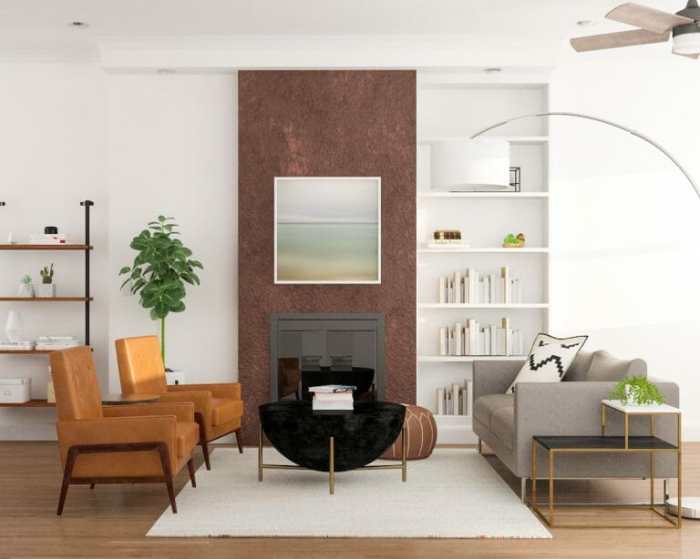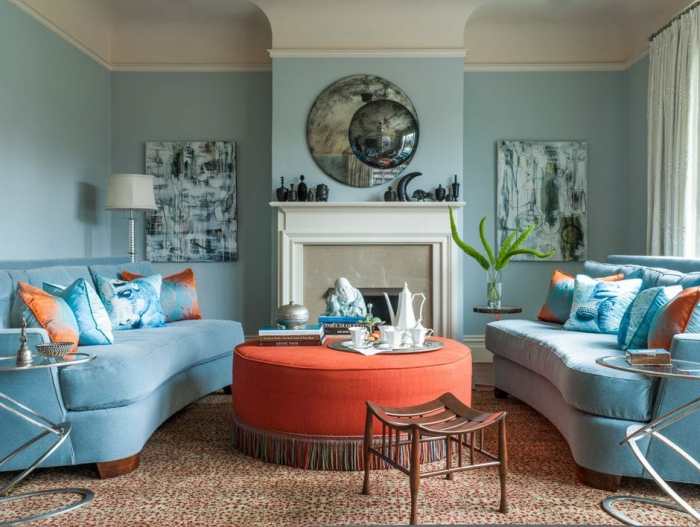Crafting Your Perfect Space: Interior Design Help Guide
Embark on a journey to transform your living space with expert guidance on interior design help. From finding the right designer to budgeting for projects, this comprehensive guide covers all aspects to create a space that reflects your style and personality.
Delve into the realm of interior design assistance and unlock the secrets to creating a harmonious and aesthetically pleasing environment in your home or office.
Overview of Interior Design Help
Interior design help involves seeking professional assistance in planning and decorating interior spaces to achieve a desired aesthetic and functionality. This can range from selecting color schemes, furniture, lighting, and decor to optimizing the layout and flow of a space.
Importance of Seeking Professional Interior Design Assistance
Professional interior designers bring expertise and a trained eye to the table, ensuring that your space is not only visually appealing but also functional and cohesive. They can help you avoid costly mistakes and make the most of your budget by sourcing quality materials and furnishings.
Benefits of Utilizing Interior Design Services
- Personalized Design: Interior designers work closely with clients to understand their needs, preferences, and lifestyle to create a unique space that reflects their personality.
- Save Time and Stress: By overseeing the entire design process, from concept to completion, interior designers can save you time and alleviate the stress of making countless decisions on your own.
- Access to Resources: Interior designers have access to a wide network of suppliers, contractors, and vendors, allowing them to source the best materials and products for your project.
- Increased Property Value: A well-designed space can increase the value of your property and attract potential buyers if you decide to sell in the future.
Finding the Right Interior Designer
When it comes to transforming your space, finding the right interior designer is crucial. A talented and reputable designer can bring your vision to life, creating a space that reflects your personal style and meets your needs perfectly. Here are some tips on how to find the perfect interior designer for your project.
Research and Recommendations
To start your search for an interior designer, begin by researching online. Look for designers in your area who have a strong portfolio of work that resonates with your style. You can also ask for recommendations from friends, family, or colleagues who have worked with designers in the past.
Word of mouth is a powerful way to find a designer who comes highly recommended.
Key Factors to Consider
Experience
Look for a designer with a proven track record of successful projects.
Style
Make sure the designer's aesthetic aligns with your own personal style.
Budget
Discuss budget upfront to ensure the designer can work within your financial constraints.
Communication
Choose a designer who communicates effectively and listens to your needs.
Portfolio
Review the designer's portfolio to see if their past projects showcase the quality and style you are looking for.
Choosing the Right Fit
When selecting an interior designer, it's essential to choose someone who not only has the skills and experience but also understands your vision. Schedule consultations with potential designers to discuss your project in detail. Pay attention to how they communicate and whether they seem genuinely interested in bringing your ideas to life.
Trust your instincts and choose a designer who makes you feel comfortable and confident in their abilities.
Budgeting for Interior Design Projects
Setting a budget for interior design projects is crucial to ensure that the project stays on track financially and meets your expectations. It helps in making informed decisions and avoiding overspending.
Cost Considerations for Interior Design Help
When seeking interior design help, there are several cost considerations to keep in mind:
- Determine the scope of the project: Clearly define what you want to achieve with the interior design project to estimate the costs accurately.
- Material and labor costs: Research and compare prices for materials and labor to get an idea of the overall cost.
- Additional fees: Factor in any additional fees such as consultation fees, delivery charges, or installation costs.
- Contingency fund: Set aside a contingency fund for unexpected expenses that may arise during the project.
Strategies for Managing and Maximizing the Budget
To manage and maximize your budget for interior design assistance, consider the following strategies:
- Get multiple quotes: Reach out to different interior designers to compare prices and services before making a decision.
- Prioritize your needs: Identify the key elements of the project that are non-negotiable and allocate your budget accordingly.
- DIY where possible: Consider taking on some tasks yourself, such as painting or minor repairs, to save on labor costs.
- Repurpose and recycle: Look for ways to repurpose existing furniture or decor items to reduce the need for new purchases.
- Plan ahead: Create a detailed timeline and budget plan to track expenses and ensure that you stay within your budget.
Collaborating with an Interior Designer
Collaborating with an interior designer is a crucial part of the design process to ensure that your vision comes to life. It involves effective communication, mutual understanding, and active participation from both parties.
Effective Communication with Your Interior Designer
- Clearly communicate your style preferences, needs, and expectations from the beginning.
- Provide examples such as mood boards, Pinterest boards, or magazine clippings to help convey your ideas visually.
- Listen to your designer's suggestions and be open to new ideas that align with your vision.
- Ask questions and seek clarification whenever needed to avoid misunderstandings.
- Regular check-ins and updates can help ensure everyone is on the same page throughout the project.
Benefits of Actively Participating in the Design Process
- Enhanced personalization: Your active involvement allows for a more personalized and tailored design that reflects your style and preferences.
- Greater satisfaction: By actively participating, you can ensure that the final outcome meets your expectations and fulfills your needs.
- Efficiency: Collaborating with your designer can help streamline the decision-making process and avoid unnecessary delays.
- Learning experience: Engaging in the design process can be a learning opportunity where you gain insights into design principles and techniques.
Interior Design Trends and Styles

Keeping up with the latest interior design trends and styles is essential for creating a modern and stylish living space. Interior design help can play a crucial role in incorporating these trends into your home, ensuring that your space is both functional and aesthetically pleasing.
Popular Interior Design Styles
There are several popular interior design styles that you can consider for your home. Each style has its own unique characteristics and elements that can help you achieve the look and feel you desire. Here are a few examples:
- Modern: Characterized by clean lines, minimalism, and a focus on functionality. A modern interior design style often features neutral colors, sleek furniture, and open spaces.
- Industrial: Inspired by old factories and industrial spaces, this style incorporates raw materials like exposed brick, metal accents, and concrete floors. Industrial design often combines vintage and modern elements for a unique look.
- Scandinavian: Known for its simplicity, functionality, and connection to nature, Scandinavian design features a neutral color palette, natural materials, and cozy textures. This style emphasizes light and space, creating a bright and airy atmosphere.
- Bohemian: A free-spirited and eclectic style that embraces color, pattern, and texture. Bohemian interiors often feature a mix of global influences, vintage pieces, and handmade items for a relaxed and artistic vibe.
DIY vs. Professional Interior Design Help
When it comes to interior design projects, deciding between DIY efforts and hiring a professional can be a tough choice. Both options have their own set of advantages and disadvantages, and understanding when to seek professional help over tackling a project yourself is crucial.
Here, we'll delve into the comparison between DIY and professional interior design help, highlighting the circumstances where each approach is most appropriate.
Advantages and Disadvantages
- DIY:One of the main advantages of DIY interior design projects is the cost-saving aspect. You have full control over the design process and can personalize every detail according to your preferences. However, DIY projects can be time-consuming and may lack the professional touch that an interior designer can provide.
Mistakes in DIY projects can also be costly to rectify.
- Professional:Hiring a professional interior designer brings expertise, experience, and a trained eye to your project. They can offer creative solutions, access to resources, and ensure a cohesive design. On the downside, professional services come with a price tag, which may exceed your initial budget.
When to Seek Professional Help
- Complex Projects: If your project involves structural changes, requires permits, or demands expertise in areas like electrical work or plumbing, it's best to hire a professional.
- Lack of Time: If you have a busy schedule and cannot commit the necessary time to a project, hiring a professional can ensure timely completion.
- Specific Style or Vision: If you have a specific design style in mind but are unsure how to execute it, an interior designer can bring your vision to life.
Balancing DIY and Professional Assistance
- Hybrid Approach: Consider a hybrid approach where you handle certain aspects of the project yourself, such as painting or sourcing decor, while leaving the more technical or design-intensive tasks to a professional.
- Consultation Services: Some interior designers offer consultation services where they provide guidance and recommendations without taking on the full project. This can be a cost-effective way to access professional expertise.
Conclusive Thoughts

As you conclude this insightful exploration of interior design help, remember that the key to a successful design project lies in understanding your needs and working collaboratively with professionals. Let your creativity flow and watch your space come to life with style and sophistication.
Clarifying Questions
How important is it to seek professional interior design help?
Professional interior design assistance can elevate the look and feel of your space, bringing expertise and creativity to achieve your desired aesthetic.
What factors should I consider when selecting an interior designer?
Consider their portfolio, style, budget compatibility, and communication skills to ensure a successful collaboration.
Is DIY interior design a good alternative to hiring a professional?
While DIY projects offer personalization, professionals bring experience and industry knowledge to deliver exceptional results.